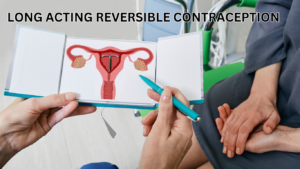- Phone 07 8848 053
- Email reception@health-tearoha.co.nz
- Facebook @healthtearoha
 Enquire with clinics@health-tearoha.co.nz as to when the next clinic is scheduled. Once a week we provide an ear clinic service for our patients. The clinic is run by a specially trained nurse who by using the latest technology can safely and effectively remove excess wax and blockages in the ear canal under micro-suction. This method is accepted as the safest; most comfortable and effective technique when compared to traditional “wet” ear wax removal methods such as syringing and irrigation.
Enquire with clinics@health-tearoha.co.nz as to when the next clinic is scheduled. Once a week we provide an ear clinic service for our patients. The clinic is run by a specially trained nurse who by using the latest technology can safely and effectively remove excess wax and blockages in the ear canal under micro-suction. This method is accepted as the safest; most comfortable and effective technique when compared to traditional “wet” ear wax removal methods such as syringing and irrigation.
Within the clinic the nurse can provide checks; cleaning; treatment of infections and advice.
Please note this service is open to “casual” patients, you do not have to be enrolled with Health Te Aroha to access this service.
Enquire with clinics@health-tearoha.co.nz as to when the next clinic is scheduled. A skin check is a really important part of keeping well in New Zealand. We have high rates of skin cancer and a skin check is a great way to pick lesions up as early as possible.
So what is a “skin check”? A skin check is a thorough check of all the skin on your body, in a systematic way. This allows us to check all the lesions on your skin. It takes up to 30 minutes to do properly, and to do this we use a special light called a dermascope. Our clinics involve a doctor and a nurse, and if you need a biopsy or a removal, we plan to be able to do this at the same clinic, or quite quickly afterwards
We are really pleased to be able to offer this service. Devoting 30 mins to a proper skin check means it can be done properly, rather than trying to squeeze it into a 15 min appointment, with other conditions to address
We aim to pick up skin cancers, but also lesions that are premalignant. This means lesions that may not be cancerous yet, but may become so in the future. If we can treat these early, we can prevent the lesion developing into a cancer.
So how often do we need to have our skin checked? This differs for each patient depending on your risk. This is affected by your sun exposure, your skin type and your family history. At your first skin check, you can discuss with the doctor what your risk is, and when you should have your next one done.
Dermnet.org.nz is a great website and lots of information about skin checks, and mole map. It also has a full description of what to expect when you have a skin check done.
Please note this service is open to “casual” patients, you do not have to be enrolled with Health Te Aroha to access this service.
 Enquire with clinics@health-tearoha.co.nz about Sexual Health consults. Health Te Aroha provides free sexual health services that are confidential, safe, accessible and friendly for young people.
Enquire with clinics@health-tearoha.co.nz about Sexual Health consults. Health Te Aroha provides free sexual health services that are confidential, safe, accessible and friendly for young people.
The objectives of the service are:
To ensure all young people who live in rural or isolated areas have access to free contraceptive advice and clinical services that are confidential, friendly and safe.
As part of this service we provide
-Assessment, diagnosis and treatment of sexual transmitted infections (STI) Sexual and reproductive health education and disease prevention advice.
-Contraceptive advice and prescribing (including emergency contraception).
-Cervical screening.
-STI screening and contact tracing.
-Referral to specialist sexual and reproductive health services, if required.
If you are not in the age range criteria for these funded procedures; please note they are still available but at the cost to the individual.
 Enquire with clinics@health-tearoha.co.nz about LARCs. Talk to your nurse or doctor to find out whether a LARC is suitable for you and to find out more about the process of getting a LARC. This is a free service for women between the ages of 15 and 44 years old. It requires an initial appointment to discuss options and a separate appointment for insertion of device, some LARCs also require a check 6 weeks after insertion.
Enquire with clinics@health-tearoha.co.nz about LARCs. Talk to your nurse or doctor to find out whether a LARC is suitable for you and to find out more about the process of getting a LARC. This is a free service for women between the ages of 15 and 44 years old. It requires an initial appointment to discuss options and a separate appointment for insertion of device, some LARCs also require a check 6 weeks after insertion.
Key points about long-acting reversible contraception
Long-acting reversible contraception is the most reliable form of contraception available. You are able to get pregnant as soon as it is removed.
There are different forms of LARC. It can be an implant in your arm or a device that is inserted into your womb.
LARCs are called ‘fit and forget’ contraception because you don’t need to remember to take them every day.
LARCs don’t protect against sexually transmitted infections (STIs), so it’s still important to use condoms for safer sex.
Almost all women of any age can use LARC. Some forms of LARC are subsidised for women between the ages of 15 and 44 years old.
What are the long-acting reversible contraceptive choices?
There are four types of long-acting reversible contraception (LARC).
The contraceptive implant. (Jadelle) A minor procedure under local anaesthetic is needed to insert the small, rod-shaped implant under the skin in your upper arm, where it remains. The implant releases a progestogen hormone. Each implant lasts three years.
The contraceptive injection. (Depo Provera) An injection of a progestogen hormone is given every three months, most commonly into the muscle in your bottom.
The intrauterine contraceptive device (IUD Copper). This is also known as ‘the coil’. It sits inside the womb (uterus) and, once fitted, can stay in your womb for up to ten years. The device is called a coil because in the 1960s some devices were coil-shaped.
The intrauterine system (IUS -Mirena, Jaydess) This is a specific type of IUCD which releases a progestogen hormone into the womb. It can last for up to five years.
Contraceptive implants (Jadelle)
A contraceptive implant is a small device placed under the skin. It contains a progestogen hormone which slowly releases into the body. Around 1 woman in 2,000 using the implant will become pregnant each year. It involves a small minor operation. An injection of local anaesthetic is used to numb the skin. Each implant lasts three years, after which it should be removed.
Advantages
• It is very effective.
• You do not have to remember to take pills.
• They are reversible and periods return quickly once they are removed.
• Your periods tend to be very light or non-existent.
Disadvantages
• Periods may become irregular (but more often are lighter or stop altogether).
• Some women develop side-effects but these tend to settle after the first few months.
See the separate leaflet called Contraceptive Implant for more information.
Intrauterine contraceptive device (Copper)
An intrauterine contraceptive device (IUCD) is also known as a coil. A plastic and copper device is put into the womb (uterus). It lasts for five or more years. Between 6 and 8 women in 1,000 will become pregnant in one year of use of this method.
Advantages
• It is very effective.
• You do not have to remember to take pills.
• It lasts a long time – 5-10 years.
• There are no hormones, so there are no side-effects due to hormonal changes in your body.
Disadvantages
• Your periods may become heavier or more painful.
• There is a small risk of serious problems.
• It is uncomfortable having the coil put in. (However, this is only once in 5-10 years.)
• They do not provide protection against sexually transmitted infections.
Intrauterine system (Jaydess, Mirena)
With the intrauterine system (IUS), a plastic device that contains a progestogen hormone is put into the womb (uterus). The progestogen is released at a slow but constant rate. Around 1-2 women in 1,000 will become pregnant in one year of use of this method. The IUS is also used to treat heavy periods (menorrhagia).
Advantages
• It is very effective.
• You do not have to remember to take pills.
• Periods become light or stop altogether.
Disadvantages
• Side-effects may occur as with other progestogen methods such as the POP, implant and injection. However, they are much less likely, as little hormone gets into the bloodstream.
• It is uncomfortable having it put in and does not last as long as the other type of coil.
Contraceptive injections (Depo Provera)
Contraceptive injections contain a progestogen hormone which slowly releases into the body. They are very effective. Between 3 and 60 women in every 1,000 using it will become pregnant. An injection is needed every 12 weeks.
Advantages
• They are very effective.
• You do not have to remember to take pills.
• Once your body is used to the hormone, you often have no periods or very light periods. Particularly if you had heavy or painful periods, this is an advantage.
• You can have contraceptive injections whilst breastfeeding.
Disadvantages
• Periods may become irregular (but often lighter or stop altogether).
• After stopping, there may be a delay in your return to normal fertility for several months. It may take up to a year for your period to come back.
• Some women have side-effects. Common side-effects are gaining weight, mood changes and headaches. You cannot undo the injection, so if side-effects occur they may continue for longer than 8-13 weeks.
• The injections cause a very slight thinning of your bones.
• There may be a very small increase in the risk of breast cancer and cancer of the neck of the womb (cervix).
If you are not in the age range criteria for these funded procedures; please note they are still available but at the cost to the individual.